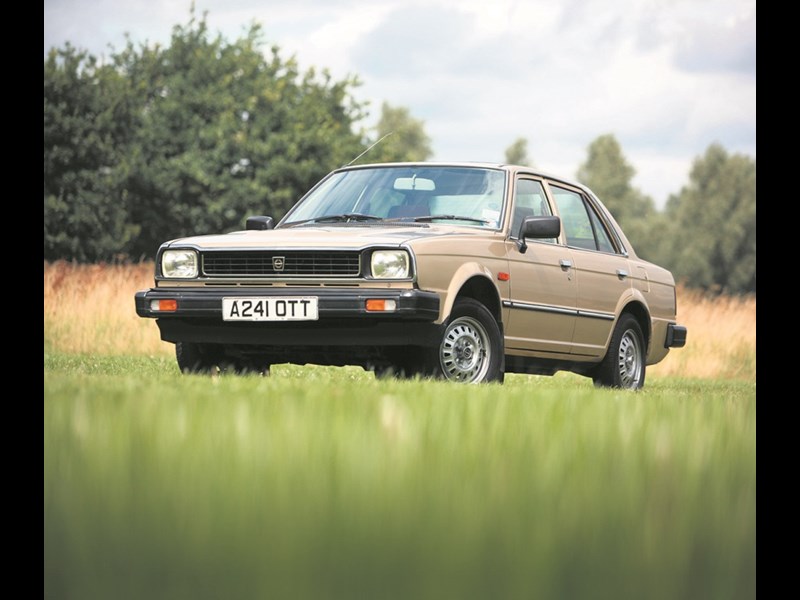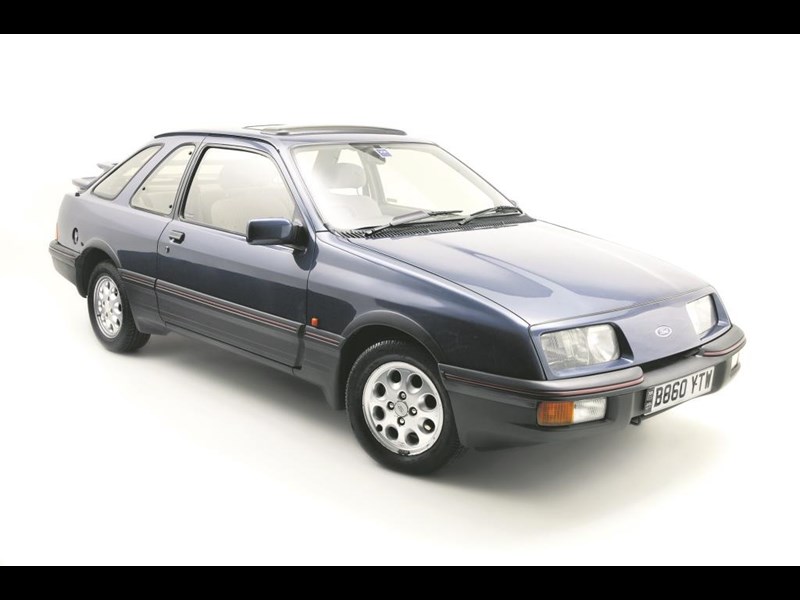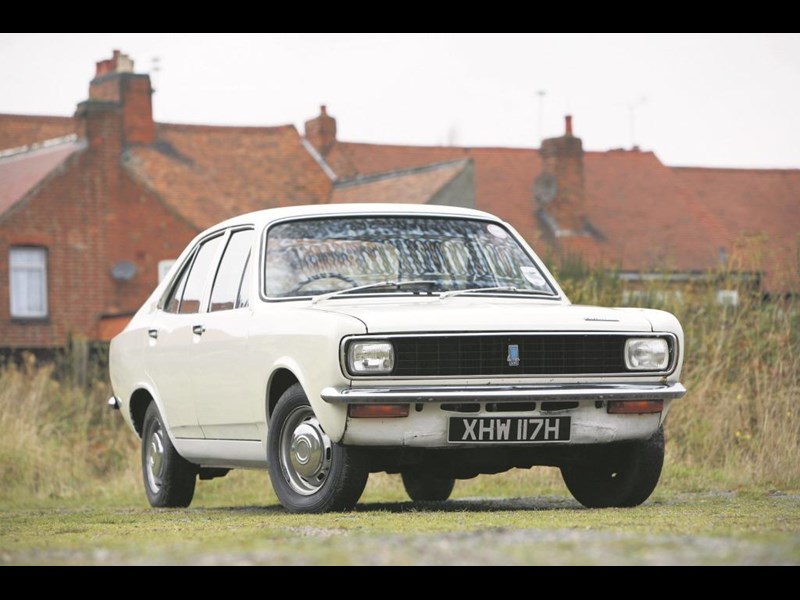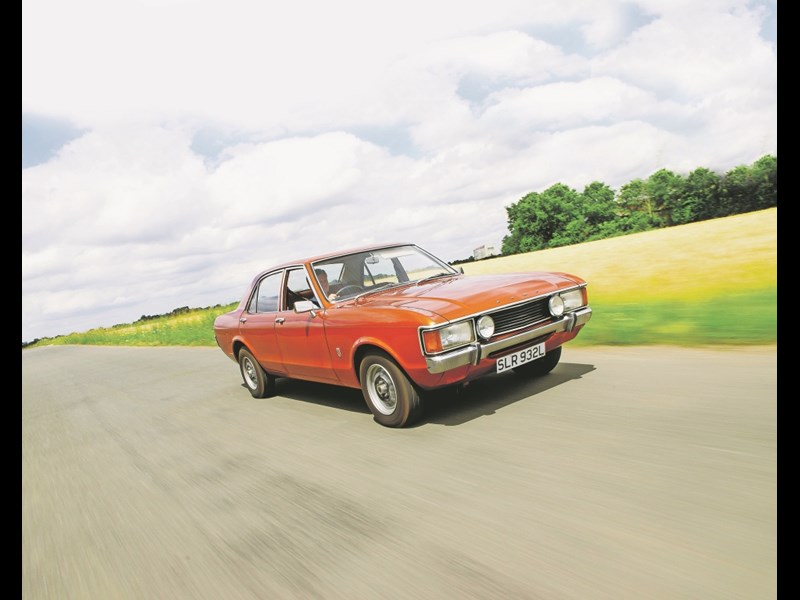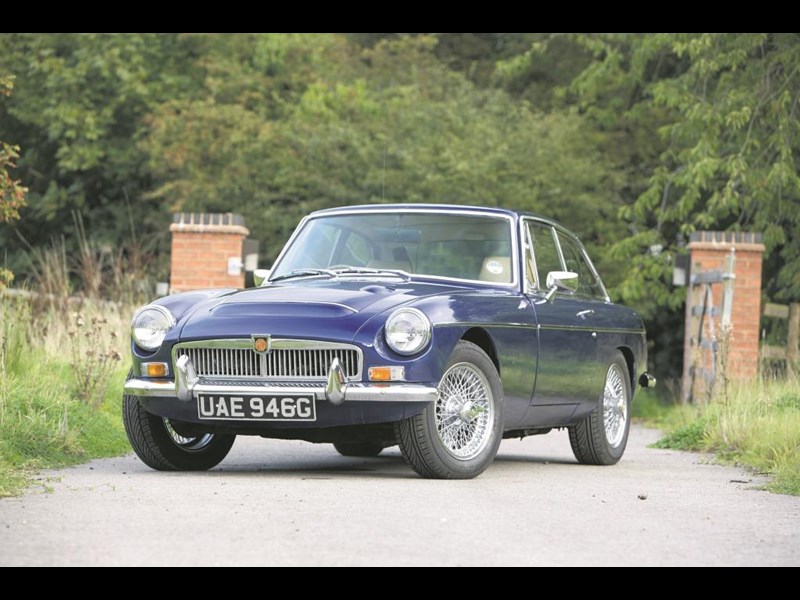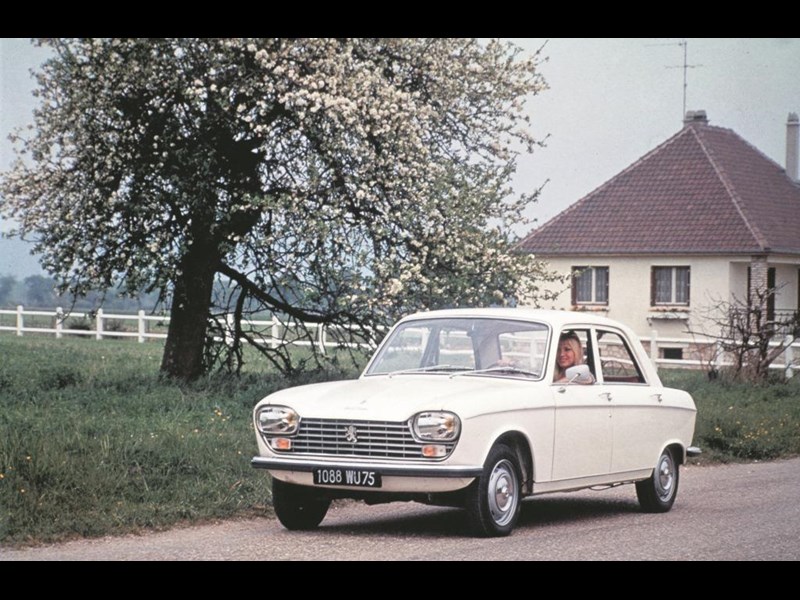We salute near-extinct classic cars that have all but vanished from the roads. Prepare to be surprised...
They were once as common on Britain’s roads as broken white lines – yet plenty of the family favourites of yesteryear have all but vanished from the motoring landscape.
These are the mass market gems that have been largely forgotten by today’s buoyant classic car market, which focuses on hot hatches, luxury saloons and sports car before reaching out the hand of enthusiast salvation to the Ls and GLs of this world.
While the E-types, MGBs and Range Rovers have found fans willing to put time and money into their maintenance and resurrection, there are plenty of other models whose numbers have been depleted.
Austin Montegos and Renault 9s fell by the wayside as rust, banger racing and second-hand market woes sent vast numbers to the scrapyard in the sky. This isn’t only a great shame, but it also strips us of our motoring heritage.
These humble everyday chariots deserve to be saved – and there’s now show in Scotland aimed at championing cars of which fewer than 500 remain. How Many Left?, inspired by the eponymous car data website, takes place at the Grampian Transport Museum this weekend.
All of the cars you’ll find over the next few pages are eligible to take part – which means they’re also great examples of classics that deserved to be saved. Some of which are more suprising than you might think…
Hillman Super Imp (1963 - 1976) - 500 remain on the road
Although journalists and owners alike confirmed that the humble Hillman Imp was more practical - yet just as amusing to drive as the market-leading Mini - the Imp has dwindled in number due largely to an unfashionable image in years gone by. With an engine positioned in the rear to attack overseas rivals and rampant corrosion issues even when new, the prospect of 37bhp and all-independent suspension just wasn’t enough to triumph over its unusual nature - which is a shame, as the Imp was and remains a competent package brimming with cheeky charisma.
MGC GT (1967 - 1969) - 444 remaining on the road
When launched, the six-cylinder MG was given a savage shoeing by the contemporary motoring press. Too heavy an engine, too much understeer and the potential to permanently part wives from their husbands led to the undesirable diminutive of ‘The Widower’. However, it’s subsequently come to light that the cars were supplied with the wrong tyre pressures, and but for this oversight the MGC would have got a fairer hearing. But it’s too late for the huge number of MGCs that have bit the dust, providing replacement parts for its more well loved four-pot and V8 brethren. More fool us – prices for MGCs are on the rise and nowadays, used as a relaxing cruiser, they make a good deal of sense.
Austin Maxi (1969 - 1981) - 401 remaining on the road.
Once a sensible practical commuter, you’d be lucky to clap eyes on an Austin Maxi these days. Branded for years alongside its Allegro and Marina siblings as a class-conscious laughing stock, the outlook for remaining Maxis appears optimistic - thanks to a committed owners’ club and its contemporary stance as an unconventional template adapted, and still used, by mainstream hatchback manufacturers. With five-speed cruising on offer it was also hugely advanced - showing the Golf MkI a thing or two.
Hillman Avenger (1970 -1976) - 369 remaining on the road.
Despite being given the spotlight as the support car for the 1978 Scotland World Cup Football Team, the Hillman Avenger has suffered a surprisingly low survival rate. Made in Britain when patriotism swayed customers into ownership, the Avenger handled with aplomb, providing good looks and practicality into the bargain. The tuning potential kept many a teenager off the streets, too and it even found brief success exported into the USA as a Plymouth and in South America as a Dodge.
Rover SD1(1977 - 1986) - 310 remaining on the road
A world beater upon launch, there was so much right about the Ferrari Daytona-inspired Rover SD1. Sadly, there was a lot wrong with it, too - reliability and build quality was so poor that it shocked even the firmest of BL devotees to the core. Rust issues set about destroying any chance most SD1s had of survival, with large numbers sent off to the metal claw as Japanese rivals proved dependability with a budget saloon was no pipe dream.
Austin Montego(1984 - 1994) - 296 remaining on the road.
Available with a wide range of engines and various trim levels to keep pushy executives and retirees alike more than content, the Montego used to trundle over Britain’s roads in the sort of numbers that’d give Carol Vorderman a headache. Unable to offer anything over the ordinary and branded with a parent badge most considered to be a lame duck, the Montego offered all the second-hand desirability of a Chinese-burn. Rusting around the edges in spectacular fashion, the Montego was soon deemed worthless - but with such a reputation it’s easy to overlook the Montego’s merits. Besides keeping the Austin name alive throughout the 1980s and early 1990s, the Montego provided dependable transport for thousands of families and, in Vanden Plas trim, would even speak to you using the voice of Nicolette MacKenzie.
Austin Allegro (1873 - 1982) - 291 remaining on the road.
Once the face of the dying British car industry, the Allegro is so deeply embedded into history and culture as a failure that the humble Austin’s merits are overshadowed. Although it failed to sell in the numbers hoped by BL management, thanks mainly to unappealing looks and a reputation for poor build quality, nearly 700,000 vehicles still found homes. Utilising hydragas suspension for all-round comfort and an endearing driving experience, the Allegro makes for an excellent introduction into classic car ownership.
Vauxhall Chevette (1975 - 1984) - 202 remaining on the road
Envisioned as a baby Chevrolet and based on Opel Kadett underpinnings, the shovel-nosed Vauxhall found favour with the British buying public remarkably well – from 1975 to 1978 it was the highest selling hatchback in the UK. Well-loved for its practicality and versatile body style options, 415,000 found homes across the United Kingdom. It also proved to be a useful rally car too, with the likes of Tony Pond and Pentti Arikkala behind the wheel. The latter took the 1979 British Open Rally Championship, finally defeating the Ford Escort’s domination.
Triumph Dolomite Sprint (1973 - 1980) - 186 remaining on the road
Although the Triumph Dolomite had been around since 1965, the ultimate incarnation didn’t arrive until June 1973. The Dolomite Sprint offered 127bhp from a 16-valve powerhouse and a huge amount of equipment as standard - wood trim, tinted windows and alloy wheels. Then there is the gloriously 1970s vinyl roof. Good looking, rapid and utterly droolworthy, the sad decline in numbers of the Dolomite Sprint is a national tragedy. Ceasing production to introduce the Triumph Acclaim, some say the Dolly Sprint was the last true BL car.
Morris Ital (1980 - 1984) - 174 remaining on the road
Viewed as a facelift too far, the Ital was an effort from BL to keep the Marina going throughout the 1980s -although it offered better quality than its predecessor, the designer body couldn’t mask that the underpinnings were pure 1970s British Leyland. This meant that rival models from Ford and Vauxhall took the market lead, helping consign the Morris name to the history books. Although named after claims that design house Ital penned the lines, they actually only acted as consultants - Harris Mann, designer of the Allegro and Princess, penned the facelift. Then again, the Morris Mann would probably have sounded stupid anyway.
Triumph Acclaim (1981 - 1984) - 170 left on the road
Not only was the Acclaim the Triumph car company’s swansong, but it also marked the start of radical change in British manufacturing. For years British cars had been deemed largely unreliable, but the Acclaim changed all that, with a great reputation for staying in one piece – it had the lowest percentage of warranty claims for a British Leyland car. With good reason – it was actually a Honda Ballade, built at Longbridge. Effectively, it was the first Japanese car built within Europe, and was the start of a long collaboration between BL/Rover and Honda.
Ford Sierra XR4i (1983 - 1992) - 150 remaining on the road
Think of a fast Ford Sierra with a big wing and chances are you’ll summon up memories of the Cosworth. The XR4i got there first, however – and thanks to its 2.8-litre Cologne V6 managed to push the fascination with fast Fords into a new era – 160bhp in a relatively lightweight bodyshell yields a still-not-too-shabby 7.8-second 0-60mph sprint. Tin worm, rampant car thievery and neglect have killed off many XR4is, which is why the very best are now becoming highly prized.
Renault 9 (1981 - 1988) - 121 remaining on the road
You’d think Robert Opron - the creative force behind the Alfa Romeo SZ and the Citroën SM - might have brought a taste of the exotic to the Renault 9. Yet swooping back roofline aside, the 9 lacked the flair of its 11 hatchback sibling, which may explain why no-one seemed to care for what was a highly regarded car at the time of its launch. The Renault 9 won the 1982 European Car of the Year award, beating exotica such as the swoopily styled Ford Sierra. It even saw action on rally stages. But as with many saloon cars, the Renault 9 soon succumbed to banger status and then disappearance. Turbo models are well worth seeking out, however – they share mechanicals with loopy and well-lauded Renault 5 Turbo.
BL Princess (1975 - 1982) - 121 remaining on the road
The definition of badge engineering, the famous wedge design could be found with Austin, Morris or Wolsely badging before finally dubbed ‘The Princess’. Utterly controversial due to BL disgruntlement and a bold Harris Mann design, the Princess was far from a bad car - it offered acres of space and made for an effortless cruiser whether venturing onto the motorway or exploring the city. The six-cylinder engine kept everything smoother than Frank Sinatra’s vocals, too.
Bond Bug (1970 - 1974) - 114 remainingFord_Sierra_ID7812.jpg on the road
While most three-wheelers provide snorts of derision from smug car snobs, the Bond Bug always elicits a smile. Yes, it may have a platry 29bhp but then it only weighs 394kg – it’s got enough get up and go to raise a smile, and can hit 76mph, if you’re brave. However, many have been stolen, never to be seen again, while others bought as playthings have long been forgotten, as the need for a practical car that can carry more than two very committed people becomes a priority.
MG 1100 (1962 - 1971) - 97 remaining on the road
While it pains us to discover only 97 MG 1100s still grace our presence, in reality we are lucky to have them at all. Although the shape is as common as a badly written Steven Segal script, only 157,409 MG 1100s were crafted in the Cowley factory. As a plush version of the beloved Morris 1100, sales were slow to start with and thanks to corrosion issues most didn’t see the 1960s out. With an engine also used in the Mini, the beating hearts of many MG 1100s still live on -albeit at the cost of sending the rest of the vehicle off to the scrap man.
Lada Riva (1981 - 2012) - 54 remaining on the road
Despite its poor reputation in the UK, the Lada Riva is a remarkable car – it’s the third highest-selling car ever made after the Ford Model T and VW Beetle, and only went out of production in 2012. It was cheap, utilitarian transport that could be worked on anywhere. It was slow, cramped and about as much fun as a vet’s dissection how-to guide, but it didn’t pretend to be anything it wasn’t. However, while we Brits like that about our Land Rovers, we’re less keen on those attributes in our family saloons. As such many UK Lada Rivas have succumbed to the scrappage scheme.
Jaguar MkX(1961 - 1970) - 50 remaining on the road
Revitalising Jaguar’s look for the 1960s, alongside the svelte E-type was this enormous offering. Easily capable of seating six fully grown adults in style, the MkX was amazingly agile for something wearing the same dimensions as a small house. It wasn’t uncommon to find the front wings wearing damage as owners underestimated its girth when venturing down narrow streets or entrances. In true Jaguar style, disc brakes and power steering were standard - although the complexity of the vehicle rendered it economically unviable as time progressed.
Morris Isis (1955 - 1958) - 44 renaming on the road
If you were the owner of a Morris Isis back in the day, you could truthfully claim to have an Austin Healey C-Series engine under the bonnet. As an attempt to push the Oxford underpinnings further up market, the Isis offered 86bhp from the 2.6-litre six-cylinder engine with upgraded brakes and stronger suspension to deal with extra weight. The Traveller variant was effectively Britain’s first people carrier, with a third row of seats available with legroom for children and adults alike.
Ford Consul GT (1972 - 1977) - 22 remaining on the road
Once seen on telly powering around London with John Thaw and Dennis Waterman in The Sweeney, the Ford Consul GT became an icon of the 1970s. With power, presence and practicality Ford’s executive saloon ticked all the boxes, and thanks to a rear-wheel drive set-up could be slung around with gusto for raw driving excitement. The GT was as hard as nails - No wonder the blaggers’ Jaguar S-Types couldn’t escape - but thanks to this aspect most ended up on the banger racing circuit.
Audi V8 (1988 - 1993) - 14 remaining on the road.
With the potential to explode at any given moment, the Audi V8 was largely avoided on the second hand market by all but the brave or unaware. Once going for pennies, expensive repair bills sent the majority into the hands of scrap merchants. This is a shame, as the V8 rightly deserves its place alongside the Quattro as a significant part of Audi history - it was the first sign that Audi was about to instigate a heated executive saloon war with rivals Mercedes-Benz and BMW.
Daihatsu Domino (1982 - 1989) - 13 remaining on the road.
One of the smallest Japanese cars ever to be imported into Britain, the Domino found homes across the UK thanks to its economical engine and ease of ownership. Sadly, due to unremarkable road manners and the safety aspects of a carrier bag, the Domino became a worthless throwaway for those running cars into the ground on a budget. However, if you can find one they are well worth saving. And we even managed to get through that without making a pun. Save one now, as numbers are falling like dominos. Oh, darn.
Fiat Regata (1983 - 1990) - 11 remaining on the road.
Launched during the 1983 Frankfurt Motor Show, the Regata sold by the bucket load, with close to two million rolling out the factory gates. However, with niggly build quality issues and a square look that dated quickly, no one bothered to keep their Regata or, indeed, maintain them with any degree of mechanical sympathy. Pumping out a small amount of horsepower and rusting so badly fist sized holes could be found in the wheelarches, constant repairs ground owners down resulting in very few examples currently left on the road.
Volvo 265 (1974 - 1980) - 10 remaining on the road
Classless, steadfast and practically indestructible, the 260 series was something of an oddity from Volvo during the 1970s. Besides wearing the same looks as its previous siblings albeit with lashings of extra chrome, under the bonnet grumbled a freshly conceived V6 engine pumping out 148bhp. The 265 Estate offered all the usual Volvo flare yet with a tad more grunt - but thanks to a thirst rivalling Oliver Reed and little to show how upmarket you were bar a slightly larger grill, the 265 never sold in the numbers akin to other Volvo innovations.
Peugeot 204 (1965 - 1976) - 10 remaining on the road
Launched in 1965, the 204 quickly became one of Europe’s quickest selling family cars. Employing a transmission-in-sump layout akin to the BMC Mini alongside clean cut and chic styling, the technological advancement hidden away put the 204 top of its market. With over 1.3 million being produced, its sad to discover that Peugeot’s servo-assisted brainchild been largely forgotten by the British classic car scene. While speed may not have been it’s forte, it kept families moving without issue until 1976.
VW Santana (1980 - 1987) - 7 remaining on the road
Nowadays the Volkwagen Passat is well-known for its stoic abilities to transport the family in comfort and with minimum fuss. Minimum excitement too, but it wasn’t always that way – and it wasn’t always a Passat. From 1981 to 1985 the VW’s mid-size saloon was the Santana and while looking at it didn’t evoke memories of South American guitarist, it did have neat ItalDesign styling cues. Alas they weren’t enough to save the Santana from sliding into unloved banger territory, and then oblivion. The Santana name lives on in China with a new 2013 model.
Mazda RX-3 (1971 - 1978) - 6 remaining on the road
While the Mazda RX-3 can still be found on drag-strips and race tracks, having undergone some serious steroid-laden surgery for special events, the popular RX-3 used to roam our main roads in droves. It’s not surprising to see why the 100bhp import found adoring fans, with all the chuckability of a Frisbee and a successful racing pedigree to back up a before unseen Japanese desirability factor. Now rarer than a comprehensible mobile-phone advert, the rotary powered RX-3 is almost mythical.
Citroën LNA (1977 - 1986) - 5 renaming on the road
Built to take on the European supermini market, the LNA may have trumpeted Citroën badging but underneath breathed pure Peugeot 104Z, with the flat-twin 2CV engine upped to 652cc - churning out 36bhp. Introduced for 1977 and eventually bowing out as the AX arrived in 1986, sadly the interesting twin-pot engined variants never made it onto UK soil. A million were produced, but now only 5 solitary examples survive, with both Mother Nature and Father Time being rather unkind to the Peugeot/Citroën mongrel.
Audi 60 (1965 - 1972) - 4 remaining on the road
Although largely overlooked due to sheer ignorance, the Audi 60 was hugely advanced when unleashed onto the buying public in 1965. With neat looks and solid engineering alongside a Daimler-Benz co-developed engine and highly sophisticated road manners, the only downside was a lack of straight-line performance. As the genesis point for modern Audi saloons, the now near extinct 60 is worth hunting down for a cost-effective chunk of German automotive history.
Talbot Tagora (1980 - 1984) - 1 remaining on the road
Considered slab-sided, ugly and now near extinct, the Talbot Tagora has been largely ignored by those searching for a viable classic. Viewed as an iconic failure, arriving in a cut-throat marketplace sporting a woeful combination of Peugeot and Chrysler engineering, the Tagora left drivers feeling underwhelmed. If you were to forgive the stench of failure, you’d find the Tagora is comfortable, roomy and - in V6 form - quicker than Alastair Campbell’s temper. Apparently, there is only one example left alive from a batch of 23,400 - making it as one of the rarest cars in existence.
Calum Brown
